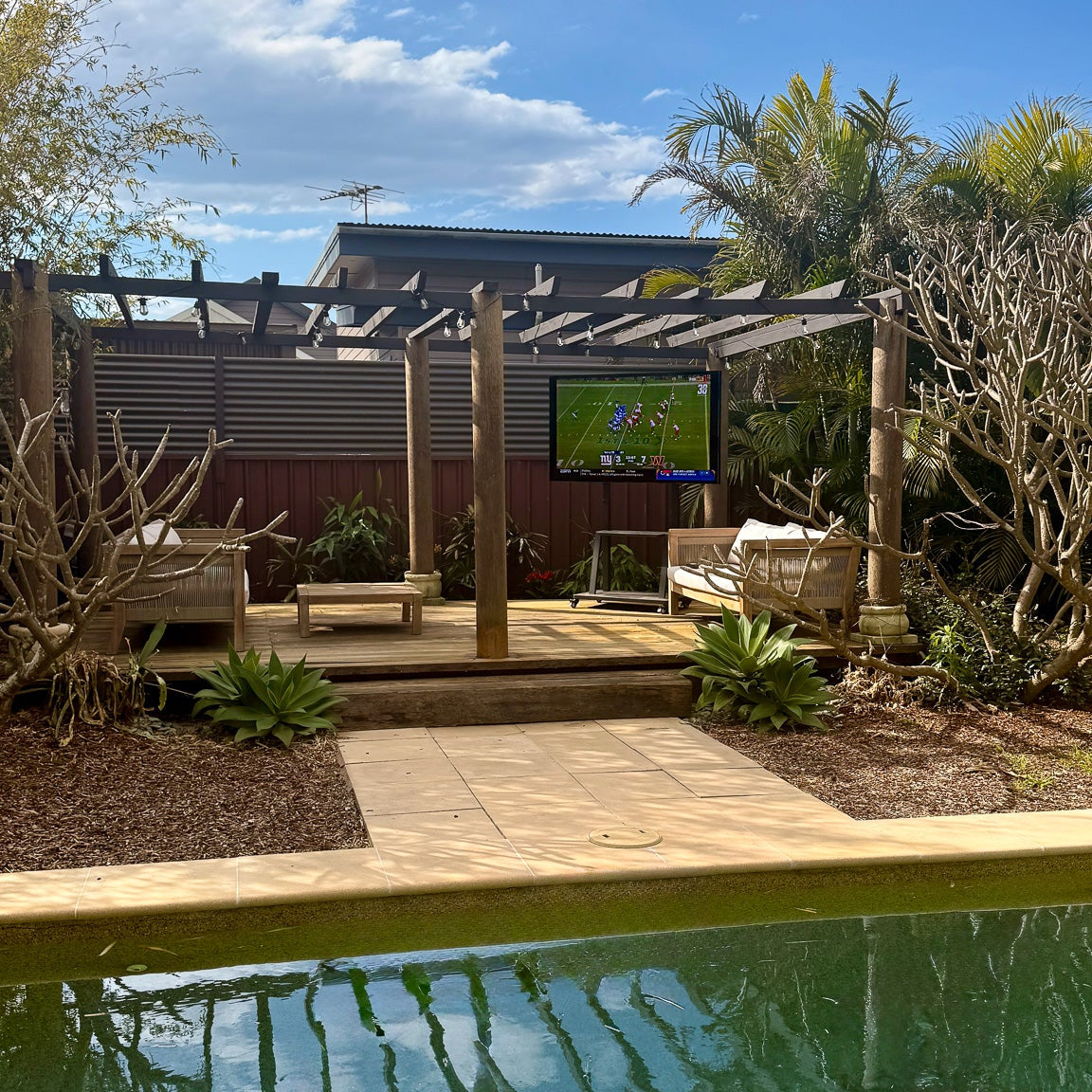Understanding NITS and Outdoor TVs: Why Brightness Matters

What are NITS?
Nits are a unit of measurement for brightness, representing the amount of light emitted per square meter (candela per square meter, cd/m²). Essentially, the higher the number of nits = the brighter the display.
Why are they important?
Higher nits ensure that the display remains clear and visible even in bright conditions, such as direct sunlight. This is particularly crucial for outdoor TVs, which are exposed to varying lighting conditions throughout the day.
It's important to note that the average indoor TVs sit around 300 NITS. Our range of SPARK Outdoor TVs ranges from 2000 NITS to a market leading 4000 NITS of brightness.
When choosing the right TV for our outdoor space, NITs are an important specification to pay attention to for a few reasons:
- Direct Sunlight: Outdoor TVs need to compete with natural sunlight, which can wash out the screen and make it difficult to see. A higher nit rating helps the display maintain its clarity and colour accuracy in such conditions.
- Reducing Glare: High nit screens, often combined with anti-glare coatings, help minimise reflections and glare, providing a better viewing experience.
- Colour Vibrancy: Brightness plays a crucial role in how vibrant and true-to-life colours appear on the screen. Higher nits ensure that colours remain rich and vivid, even in bright outdoor settings.
- Contrast and Detail: Increased brightness improves contrast, making dark scenes more distinguishable and enhancing overall detail in the picture.
All-Weather Performance:
Consider an Outdoor TVs with adaptive brightness features, which automatically adjust the screen brightness based on the surrounding light conditions. This ensures optimal viewing at any time of day, regardless of changing light levels.
Tips for choosing the right outdoor TV: Assessing your environment.
Location: Determine where your TV will be placed. Is it under a shaded area, partially exposed, or in full sunlight? This will help you decide the appropriate nit level.
Usage Time: Consider when you’ll most frequently use the TV. Daytime viewing requires higher brightness, while evening viewing can do with lower brightness levels.
Additional Features: Ensure the TV has other outdoor friendly features, such as weatherproofing, anti-glare coatings, and robust construction.
